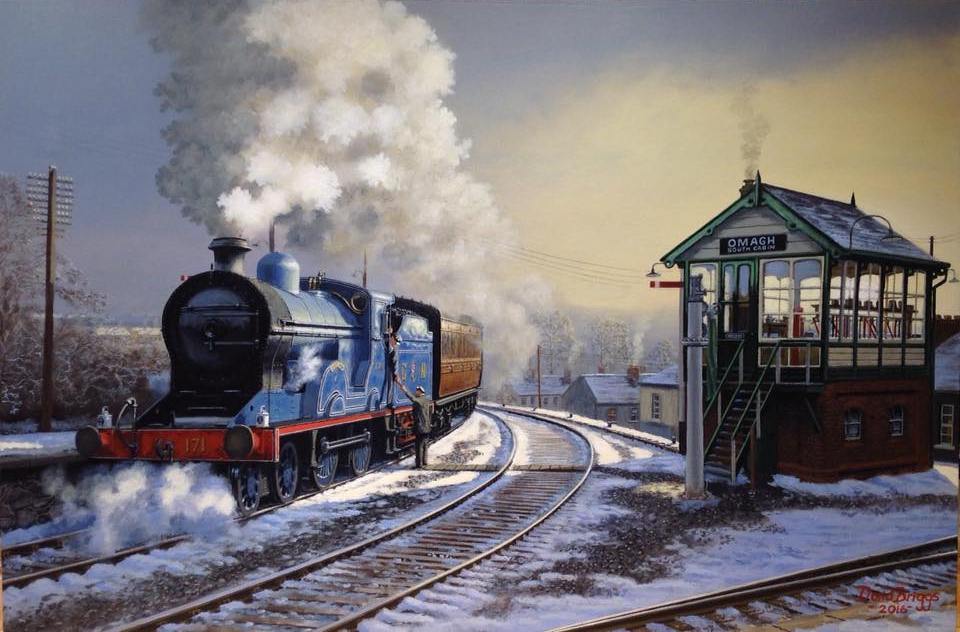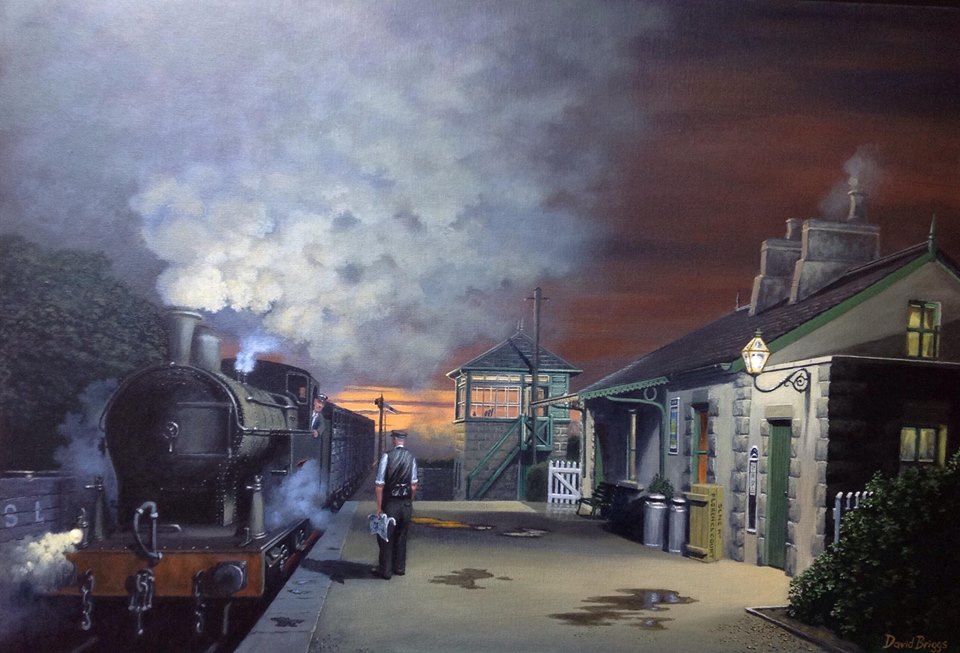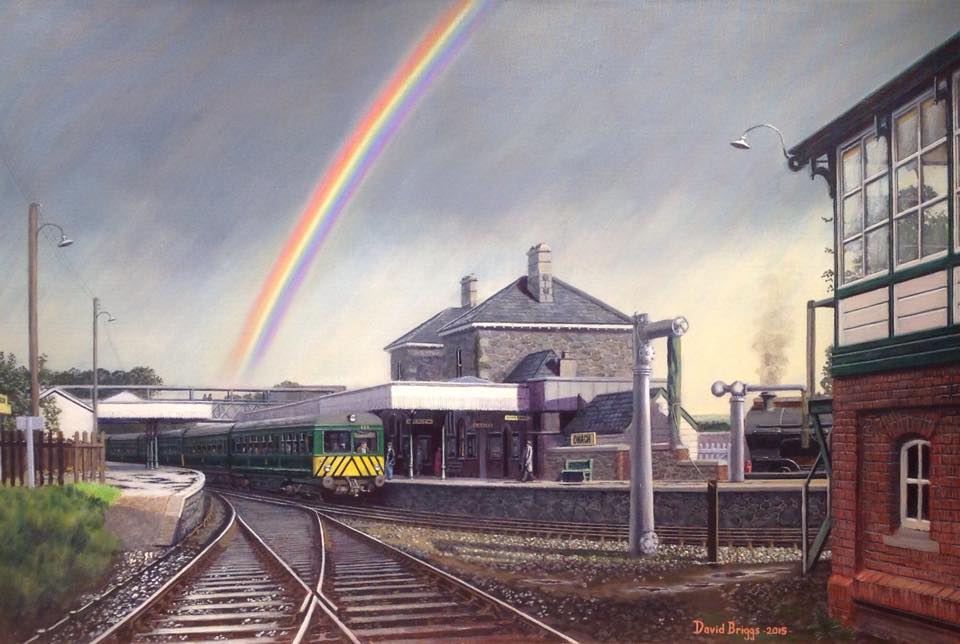Long, long ago when the railway workshops at Inchicore were at the cutting edge of engineering innovation a great British railway engineer – Oliver V Bulleid CBE – was appointed Chief Mechanical Engineer of CIE. A believer that steam traction still had a future in Ireland he oversaw experiments in using turf as a fuel for steam locomotives. These experiments culminated in 1957 with the appearance of the futuristic CCI “The Turburner”. David Briggs takes up the story….
CCI – The Turfburner Trials
The setting for this painting is Inchicore on the mainline from Dublin to Cork. It has been the main workshops for the railways in the Republic of Ireland since it was constructed by the Great Southern & Western railway in the mid 1840’s. The castellated facade on the right hand side of the painting fronted vast workshops, the smaller building on the left hand side of the view was until recent times a signal cabin.
In the mid 1950s the then Irish state transport company was CIE. They had already begun a process of dieselisation indeed one of their early diesel locomotives can be seen in the background approaching on the shed road. It is a Metro Vic A class – A57, one of a class of 60 that would undertake the bulk of mainline duties for many years, and prove very successful once re-engined with General Motors power plants., however the main featured loco in the painting is what is of interest here.
As a result of a late 1940’s report (the Milne report ) into the state of Irish railways the chairman of CIE Thaddeus C Courtney ( in the painting with the camel coloured coat and bowler hat ) invited one of the committee who carried out the study, one OVS Bulleid to join CIE as Consulting Mechanical Engineer ( later Chief Mechanical Engineer – CME ). Oliver Bulleid resigned as CME of the southern region of British Rail and moved to Ireland. He was one of the last of the famous CME’s of the steam era and although some of his ideas were questioned at times by his peers he was undoubtedly an able engineer and designer.
Ireland had little suitable coal resources for steaming but did have abundant supplies of low calorific value fuel in the form of peat or turf as its more commonly known. Bulleid reckoned he could design and build a suitable locomotive that utilised this fuel and thus was born CC1 – The Turf Burner. As this is a narrative to give context to the painting I won’t go into the details of how it works but it makes interesting reading if you care to do your own research! Ultimately the project was not pursued just as with Bulleid’s other innovative project for BR ‘ The Leader’.
Our scene above then is CC1 passing Inchicore on a test train to Cork in October 1957 with a hotch potch of available carriages ( purely to provide a load for the loco ) . The loco would ultimately be fully painted in lined green but during the trials was as is usual painted in workshop grey. Bulleid ( black coat, red bow tie, and bowler hat ) is explaining to the ‘ brass’ at Inchicore some technical point or other as the train, driven by a skilled and enthusiastic Inchicore works driver Michael Keely, passes heading west.
Bulleid designed and built other excellent rolling stock during his time in Ireland, however he tends to be remembered on both sides of the Irish sea for his more ‘outside the box’ type thinking and perhaps not concentrating on maximising the company’s efficient operating and therefore profit. He was certainly a visionary but the steam age was coming to an end and so was his career, he retired in 1958 to Devon and then Malta where he died in 1970 aged 87. I think he was just born too late for his steam engineering dreams to be fulfilled.







